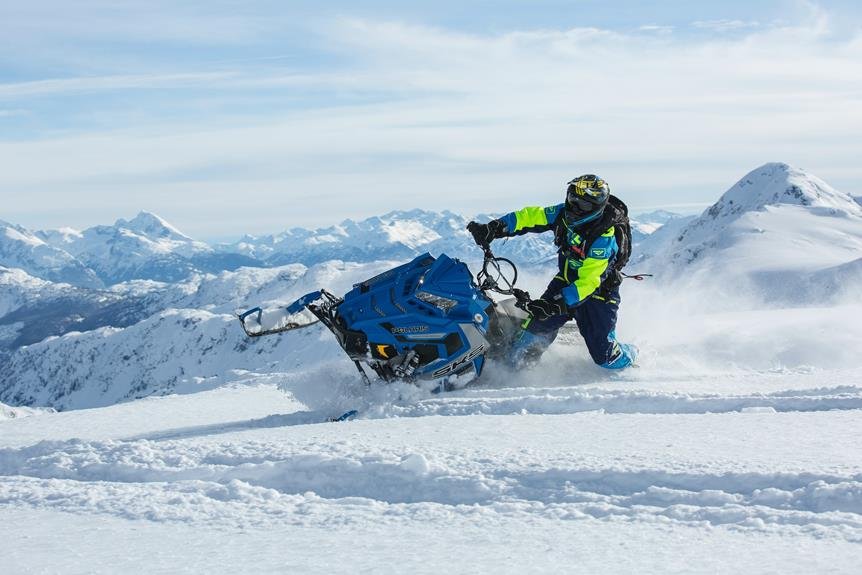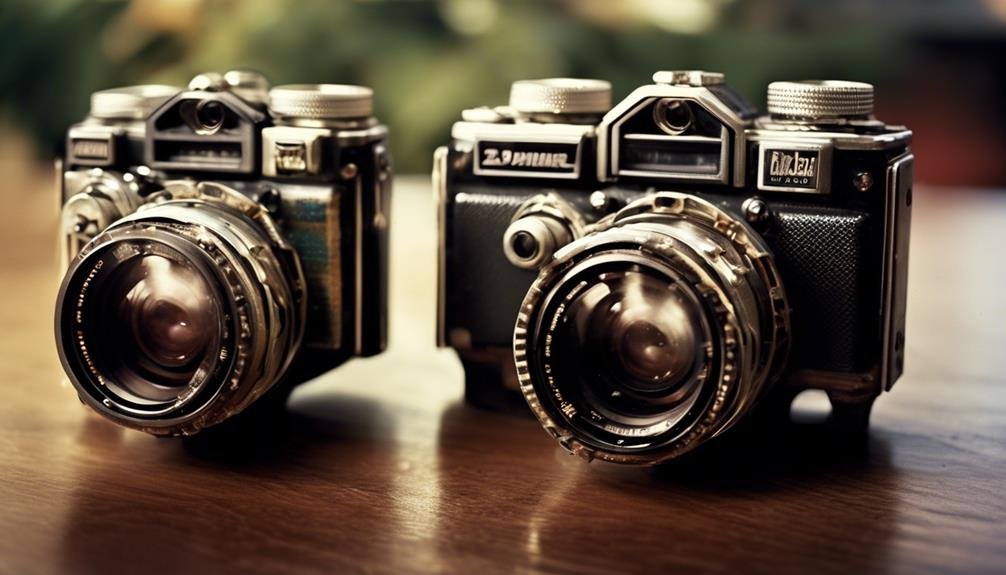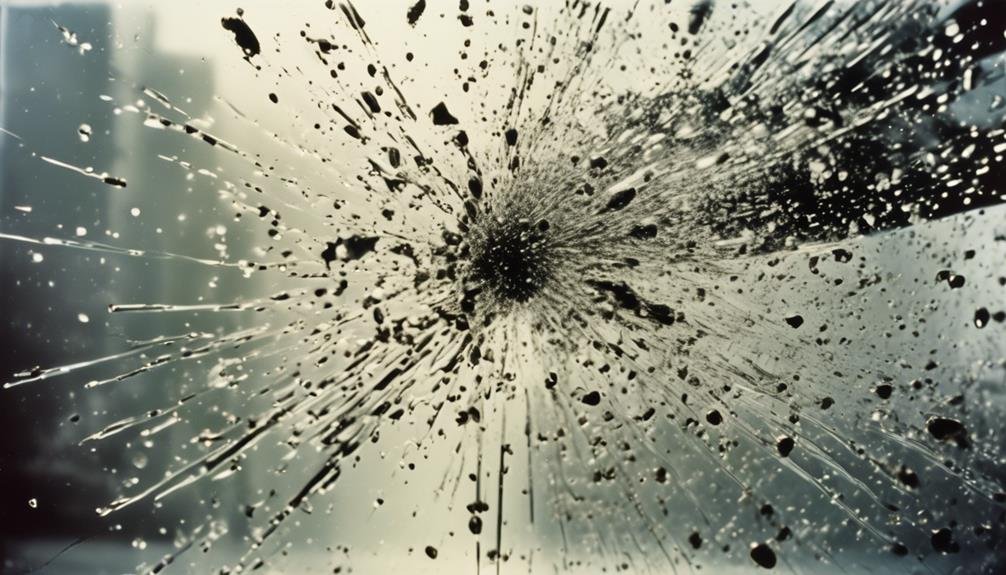
As photographers, we often find ourselves caught between the mesmerizing stillness of a perfect shot and the electrifying rush of capturing fast-paced action. It's in these moments that the right high-speed image sensor becomes our trusted ally, allowing us to freeze the split-second movements of athletes, wildlife, or any dynamic subject with precision and clarity. But with a plethora of options available, each boasting its own set of features and capabilities, how do we discern the best choice for our specific needs? Join us as we explore the top high-speed image sensors, comparing their key features, performance optimizations, and the latest advancements that are shaping the future of action photography.
Understanding High-Speed Image Sensors
Understanding high-speed image sensors requires a grasp of their intricate design and the fundamental principles governing their rapid image capture capabilities. Image sensor technology has evolved significantly, enabling the capture of fast-moving objects with exceptional precision. These sensors employ advanced motion capture techniques, allowing for the seamless recording of dynamic scenes with unparalleled clarity and detail.
The innovation in image sensor technology lies in its ability to rapidly convert light into electronic signals, enabling the capture of high-speed motion with remarkable accuracy. By utilizing sophisticated motion capture techniques, these sensors can freeze fast-moving subjects, making them invaluable in various fields such as sports analysis, scientific research, and industrial applications.
Moreover, the intricate design of high-speed image sensors involves the use of advanced semiconductor materials and microfabrication processes, resulting in enhanced sensitivity and reduced noise levels. This enables the sensors to deliver exceptional image quality even in low-light conditions, making them versatile tools for a wide range of applications.
Key Features for Sports Photography
High-speed image sensors play a crucial role in capturing the fast-paced action of sports photography, enabling photographers to freeze dynamic moments with exceptional precision and clarity. When it comes to sports photography, certain key features are essential for capturing the perfect shot:
- Shutter Speed: The ability to adjust the shutter speed is crucial for sports photography as it allows photographers to freeze fast-moving subjects or create motion blur for artistic effect. A faster shutter speed is often necessary to capture quick movements, ensuring that every detail of the action is sharp and clear.
- Burst Mode: This feature is indispensable for capturing the perfect sports moment. Burst mode allows photographers to take multiple shots in rapid succession, ensuring that they don't miss a critical moment. It's particularly useful for fast-paced sports where the action is unpredictable and continuous.
- Autofocus Performance: Sports photography demands quick and accurate autofocus performance. The ability of the image sensor to swiftly and accurately focus on moving subjects is essential for capturing sharp, high-quality images, especially in challenging lighting conditions or rapidly changing environments.
These features are essential for sports photographers looking to capture the adrenaline-pumping action with precision and innovation.
Top High-Speed Image Sensors Comparison

In comparing the top high-speed image sensors, it's crucial to evaluate their performance in capturing fast-moving subjects with exceptional precision and clarity. When considering image sensor technology for industrial applications, key factors include frame rate, resolution, and light sensitivity. The Sony IMX382, for instance, offers a high frame rate of 1000 frames per second (fps) at full resolution, making it suitable for demanding industrial inspection tasks. On the other hand, the ON Semiconductor AR0521 provides a balance between resolution and speed, offering 5MP resolution at 120 fps, catering to applications requiring detailed image capture at high speeds. Additionally, the Teledyne e2v's Emerald 12M offers exceptional light sensitivity, making it ideal for low-light industrial environments. It's crucial to select an image sensor that aligns with the specific requirements of the industrial application, whether it's for machine vision, robotics, or automation. By carefully comparing the features and performance of high-speed image sensors, it becomes possible to make informed decisions that drive innovation and efficiency in industrial imaging systems.
Optimizing Performance in Action Shots
To capture action shots with optimal precision and clarity, it is essential to select an image sensor that offers high frame rates and exceptional light sensitivity while maintaining a balance between resolution and speed. Action photography demands cutting-edge technology to freeze fast-paced moments with sharpness and detail. Here are three key factors to optimize performance in action shots:
- Shutter Speed: A high-speed image sensor must have the capability to handle ultra-fast shutter speeds to freeze rapid movements effectively. This ensures that each frame captures the action with minimal motion blur, resulting in crisp and dynamic images that truly convey the intensity of the moment.
- Motion Tracking: The sensor should excel in motion tracking, enabling it to swiftly and accurately follow subjects in motion. This feature is crucial for maintaining focus on fast-moving subjects, ensuring that every frame is perfectly in focus, even during high-speed sequences.
- Burst Mode: An ideal high-speed image sensor should support rapid burst mode, allowing for a continuous stream of images to be captured in quick succession. This capability is essential for capturing split-second moments, providing photographers with a wealth of shots to choose from and increasing the likelihood of obtaining the perfect action shot.
Advancements in High-Speed Image Sensors

With recent technological advancements, image sensor technology has made significant strides in capturing high-speed action with unprecedented precision and detail. Motion capture has seen remarkable improvements due to advancements in sensor technology, enabling the capture of fast-moving subjects with exceptional clarity. Fast shutter speeds made possible by these advancements allow for the precise freezing of action, ensuring that no detail is lost even in the most rapid movements. Additionally, the development of advanced image processing algorithms has further enhanced the capabilities of high-speed image sensors, allowing for the rapid and accurate handling of large amounts of data produced during high-speed capture.
These advancements in high-speed image sensors have revolutionized the way we capture and analyze fast-paced events, making them invaluable in various fields such as sports, scientific research, and industrial applications. The ability to accurately capture and analyze high-speed motion opens up new possibilities for innovation and discovery. As sensor technology continues to advance, we can expect even greater precision, speed, and versatility in high-speed image capture, further pushing the boundaries of what is possible in fast-action photography and analysis.
Frequently Asked Questions
Can High-Speed Image Sensors Be Used for Non-Photography Applications, Such as Industrial Inspection or Scientific Research?
High-speed image sensors can excel in non-photography applications like industrial inspection and scientific research. Their rapid capture rate and high resolution enable precise analysis, enhancing efficiency and accuracy in diverse fields.
How Do High-Speed Image Sensors Handle Different Lighting Conditions, Such as Low Light or High Contrast Situations?
In low light, high-speed image sensors utilize advanced technology to enhance sensitivity and capture details. They adapt to high contrast situations by adjusting exposure levels and optimizing dynamic range. This demands precision lens requirements for optimal performance.
Are There Any Specific Requirements for Lenses When Using High-Speed Image Sensors for Capturing Action Shots?
When capturing action shots with high-speed image sensors, specific lens requirements are essential. The lens needs to have a fast aperture to allow more light, a quick autofocus system, and image stabilization for sharp, blur-free images.
Can High-Speed Image Sensors Be Used for Video Recording, and if So, What Are the Limitations and Considerations?
High-speed image sensors are versatile for video recording, with considerations for frame rate, resolution, and data processing. For surveillance, they offer precise motion capture, while sports analysis benefits from sharp, detailed imagery for performance evaluation and training.
What Are the Potential Future Developments and Advancements in High-Speed Image Sensor Technology That Could Further Improve Performance in Capturing Fast-Moving Subjects?
In the future, we anticipate high-speed image sensor technology to soar to new heights, capturing action with unprecedented precision. With advancements on the horizon, we foresee remarkable performance improvements that will revolutionize fast-moving subject photography.
